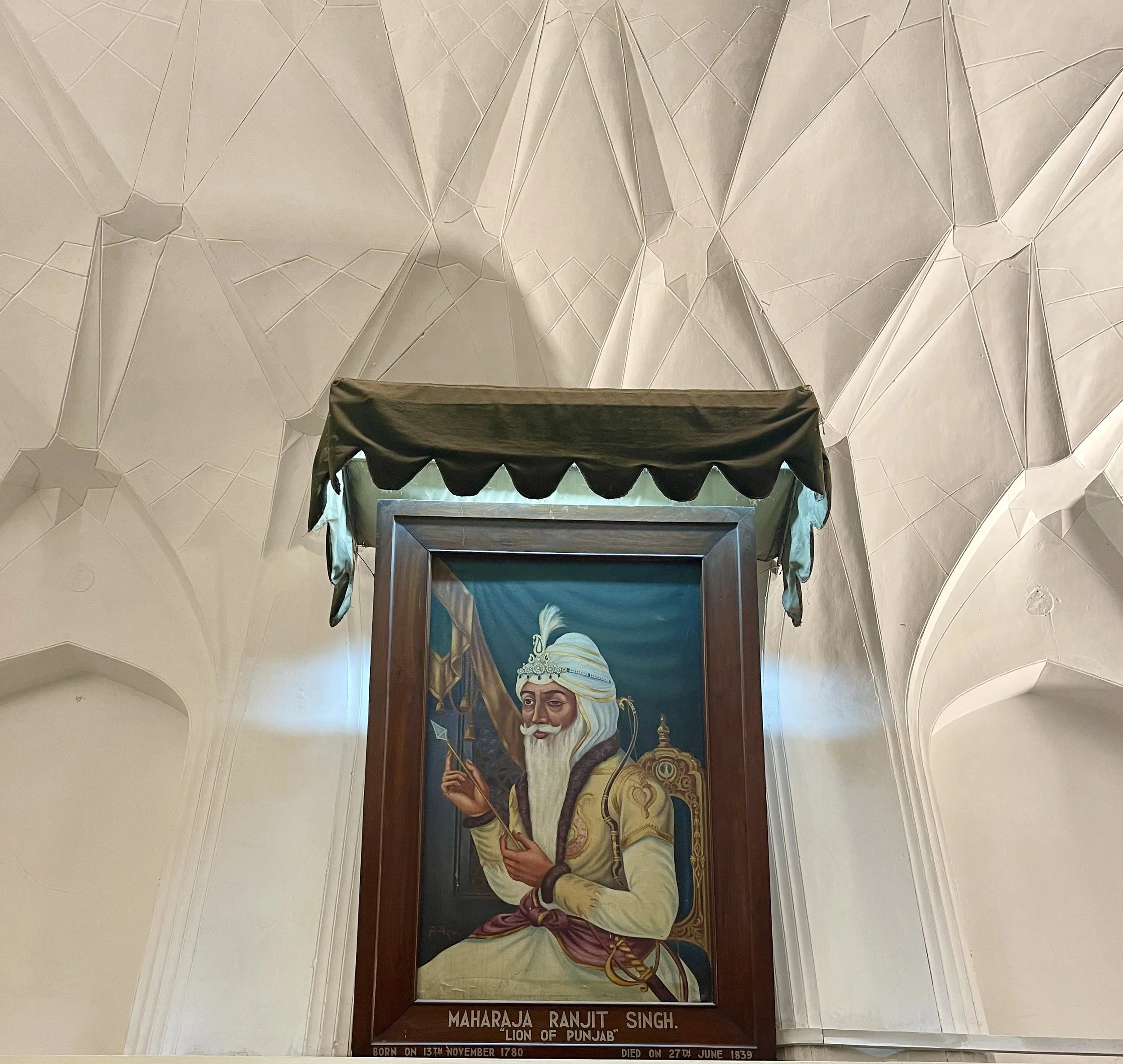From Misls to a unified empire
~
Early challenges
~
The treaty of Amritsar (1809)
~
Military Expansion
~
The Punjabi Army
~
Golden Era of the Empire
~
The court and administration
~
Foreign officers
~
Trade & Economy
~
An Arcitectural and cultural legacy
~
From Misls to a unified empire ~ Early challenges ~ The treaty of Amritsar (1809) ~ Military Expansion ~ The Punjabi Army ~ Golden Era of the Empire ~ The court and administration ~ Foreign officers ~ Trade & Economy ~ An Arcitectural and cultural legacy ~
Punjab’s story under Maharaja Ranjit Singh, and the greater Sikh Empire.
Strength. Ambition. Transformation. Leadership that shaped the modern Punjab. One of its most pivotal eras.
The Maharaja's death
~
A succession struggle
~
Sher Singh's rule
~
The ROLE OF THE DOGRAS
~
The last Maharaja
~
The First Anglo-Sikh War (1845-1846)
~
The Second Anglo-Sikh War (1848-1849)
~
Remains of the Empire
~
Influence on Modern Punjab
~
Legacy
~
The Maharaja's death ~ A succession struggle ~ Sher Singh's rule ~ The ROLE OF THE DOGRAS ~ The last Maharaja ~ The First Anglo-Sikh War (1845-1846) ~ The Second Anglo-Sikh War (1848-1849) ~ Remains of the Empire ~ Influence on Modern Punjab ~ Legacy ~
An Introduction
The rise of the Sikh Empire is one of the most significant chapters in the history of Punjab. Emerging in the late 18th century, the empire marked the culmination of centuries of Sikh resistance against the Mughal Empire and the Afghan invasions. It is a story of unity, strength, and transformation - where a disparate group of warrior communities, known as the misls, came together under the leadership of one man: Maharaja Ranjit Singh.
The Sikh Empire began with the unification of the Punjabi Confederacy who had been independently defending their territories against Mughal and Afghan rulers for decades. By 1799, Ranjit Singh, a prominent leader from the Sukerchakia misl, capitalised on the weakening power of the Mughal Empire and the invasions from Ahmad Shah Durrani. Through skillful diplomacy, military brilliance, and a keen ability to unite diverse factions, Ranjit Singh captured Lahore, making it the heart of the new Sikh state.
This marked the foundation of the Sikh Empire, which would go on to become one of the most powerful entities in the Indian subcontinent. The empire, known for its military prowess and progressive policies, stood in stark contrast to the declining Mughal Empire and the emerging British colonial rule.
Under Ranjit Singh, the Sikh Empire enjoyed its peak, spanning much of the Punjab region, and extending into parts of present-day Pakistan, India, and Afghanistan. It was characterised by a blend of military strength and cultural renaissance. The Sikh Army, led by generals like Hari Singh Nalwa, was known for its formidable presence, successfully resisting British expansion into Punjab for decades. At the same time, Ranjit Singh’s governance fostered religious tolerance, economic growth, and cultural development.
However, internal rivalries and succession struggles marred the empire's stability after Ranjit Singh’s death in 1839. The absence of a strong central authority eventually led to the disintegration of the empire and its fall to the British in 1849. Despite its relatively short life, the legacy of the Sikh Empire remains.
This series will explore the rise, peak, internal challenges, and eventual downfall of the Sikh Empire. Each chapter will dive into the key moments, figures, and battles that shaped the empire's trajectory and its enduring legacy. Whether you’re a historian, a student, or simply curious about the rich history of Punjab, this series will provide a comprehensive look into one of the most fascinating and influential empires in South Asian history.
Coming in 2026...
Coming in 2026...
Portrait of Maharaja Ranjit Singh - Lahore, Punjab. 